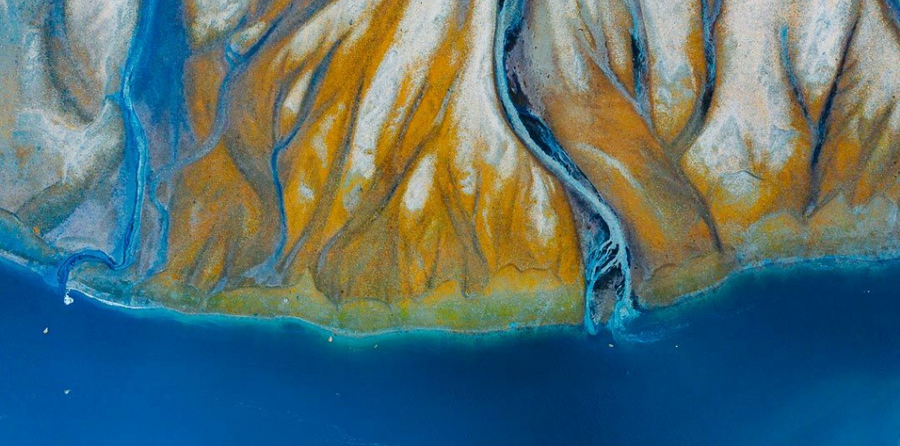
People around the world are concerned about whether what they eat is sustainable and rightfully so. Food is perhaps our deepest connection to the earth and its rhythms. Seafood, in particular, represents a poignant connection with the natural world because it is just about the last commercially available wild meat.
It’s no wonder sustainable seafood has become a buzz word. But what does it mean? You might ask, What is the state of the oceans? How are fish populations doing? What impact does the fish we eat have on the planet? These are all good questions. It’s important that we seek out fish that has been harvested without damaging the planet and our resources.
Alaska’s successful fisheries management practices produce consistently healthy and sustainable fish harvests year after year. The state of Alaska has been seen as a model for sustainable seafood for the world. This notion came from an important statement in the 49th state’s State Constitution: “Fish, forests, wildlife, grasslands, and all other replenishable resources belonging to the State shall be utilized, developed, and maintained on the sustained yield principle.”
Before statehood, the people of Alaska had recognized how essential the land’s resources were for future generations. As a result of the unique foresight that the writers of the state constitution had, Alaska supplies more than half of the wild-caught seafood in the United States and a great amount of wild seafood throughout the world.
The secret to Alaska’s success with providing the United States and the world with sustainable seafood lies in two basic principles:
First, do no harm. Responsible fisheries management and sustainable fishing practices take care not to harm the fish, other marine plants and animals, nor the environment. In addition, fish populations are never over-fished. Over-fishing occurs when too many fish are taken from the sea and there are not enough fish left to replenish the natural population.
The second principle, which is really the end goal, means ensuring future generations have enough fish to catch. Sustainable seafood, in our minds, means having enough fish so that our grandchildren can fish the same way we do. In this way, Alaska promises to provide wild-caught salmon and sustainable seafood for generations to come.
For eons, Alaskans have sustained themselves with wild bounties from the sea. This reverence for fish can be seen in native arts, as well as the fishing practices of the families who make their living off the sea. Being responsible stewards of this rich natural resource means using careful harvesting methods, accurately reporting catches, and adhering to scientific data. This is the only way to protect the fish and the livelihood of fishermen and the communities that depend on them.
Alaska is just about as close as we’re going to get to a clean environment on the planet. Where the wild salmon, halibut, black cod and other seafood eat only what nature provides. Alaska protects marine habitats from harmful fishing methods and industrial pollution. In many cases, Alaska’s fishermen advocate for the sanctity of the waters and the forest habitats that nourish spawning salmon.
In Alaska’s Marine Protected Areas, hundreds of thousands of square miles have been established in the waters off Alaska to safeguard this habitat from human activity. No Alaska seafood has ever been listed as endangered under the Endangered Species Act.
HOW ALASKA PRODUCES SUSTAINABLE SEAFOOD

Alaska’s sustainable seafood management is science-based. As such, every aspect of fishing in Alaska is based on the latest scientific data being gathered by biologists. With new research, biologists set new guidelines for the total number of fish that can be caught.
This science-first approach prevents over-fishing and helps maintain a healthy and sustainable fish population, while preserving the delicate ecosystem. Because of this precautionary and conservative approach, Alaska’s fisheries are a model for the world.
Scientists first calculate the Acceptable Biological Catch (ABC), which is the maximum number of fish that can be sustainably caught. Then, to be cautious, fisheries managers determine the Total Allowable Catch (TAC), which is the total amount of fish that can be legally harvested. With these numbers, the state of Alaska ensures that that there will always be plenty of fish in the sea.

The National Marine Fisheries Service and the Alaska Department of Fish & Game, along with several other organizations at the local, state, federal and international levels, work together to set the sustainable management methods to uphold Alaska’s high standards.
These agencies employ the following practices: Time-and-area closures, Restrictions on size of boats, and Restrictions on type of fishing gear. The state’s unique blend of collaboration and public decision-making are key features of the Alaska fisheries management model. Public participation by fishermen and seafood processors, as well as environmental groups is encouraged. Alaskans believe that the opportunity for the public to participate in the fisheries management process helps build widespread understanding about smart management.
Alaska’s commitment to sustainability has proved the effectiveness of strict science-based management. When you buy Alaska seafood you are making a responsible choice for your health and that of the oceans. You are supporting sustainable seafood. Ask for Alaska Gold Seafood.



